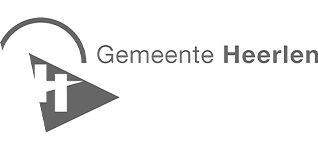City of Heerlen

The municipality of Heerlen is a formerly prosperous centre of the coal mining industry, located in the southeast of the Netherlands. Heerlen will be faced with heat waves and floods by 2050. In anticipation of this, it seeks to adapt by moving forward and innovating step-by-step in a sustainable eco-citizen transition.
Innovation at the heart of the district heating and cooling network
Since 2008, the city has been reusing geothermal energy from its mines to heat and cool its homes. Thanks to the European Minewater project, Heerlen has a “fifth generation” heating and cooling system. It limits energy losses by supplying buildings through a closed, interconnected network of above- and below-ground pipes.
Today, Heerlen, as an example in this field, proposes to develop this solution in Europe. The system has saved 55% of CO2 emissions and created local jobs via the Mijnwater BJ company.
Cooperation and solidarity to fight against precariousness
Citizens have formed the Heerlen Solar Cooperative to offer everyone clean, local and accessible energy that everyone can control. It also fights against local energy poverty thanks to a solidarity fund. Furthermore, the municipality is a member of the Heerlen-Nord Alliance, a large network without a formal hierarchy, to improve the living conditions of the inhabitants of poor neighbourhoods.
Heerlen plans to build 1.5 million sustainable houses by 2030. The cooperative supports this goal. In 2020, the Citizen Energy Cooperative (CER) installed 5,000 photovoltaic panels on the roofs of the municipality.
Local and circular economy for an eco-citizen city
To support the decarbonisation of the city, the 8 municipalities of the Parkstad Limburg region have provided an advice desk to residents who wish to renovate their homes. Depending on their needs and the homeowner’s budget, services can range from DIY to project monitoring and financing.
One of the city’s objectives is to stimulate sharing platforms to develop the circular economy by 2050. The goal is to decrease residual waste per inhabitant to 100 kg and CO2 emissions by 33%. Among other things, the municipality will promote the reuse of waste as a raw material.
Sources: official website of Heerlen (in Dutch); ‘Minewater’ project website; previous Energy Cities articles and best practices; news article from the platform of peer-reviewed literature Science Direct; website of the European project ‘5gdhc’;
 The Netherlands
The Netherlands